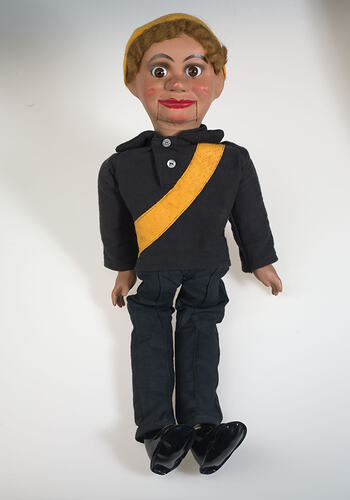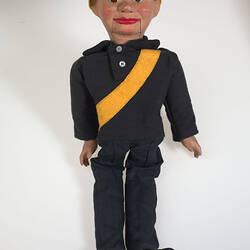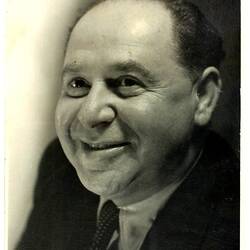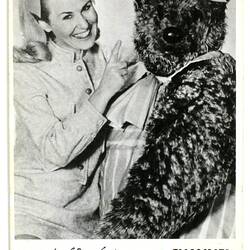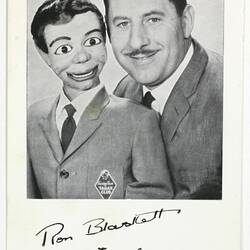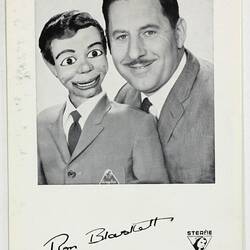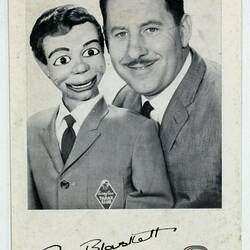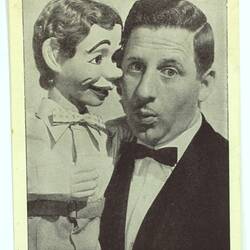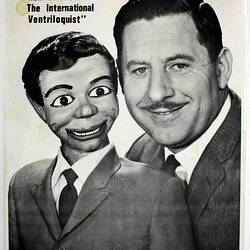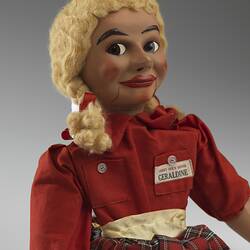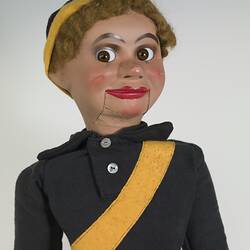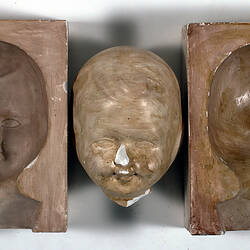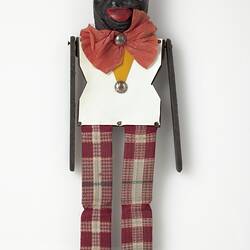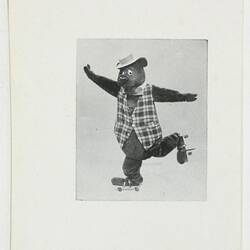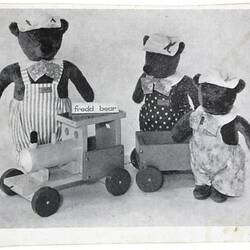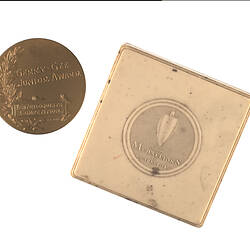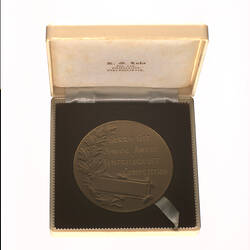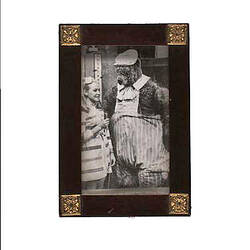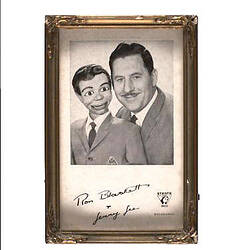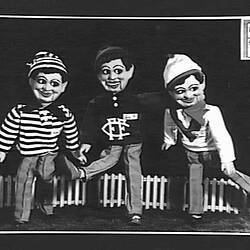The L.J. Sterne collection is significant as one of the few surviving collections related to an Australian toy and doll manufacturer, a once-thriving industry in Australia. Only the Lindsay Archive at the Powerhouse Museum (documenting a children's fancy dress maker of the 1950s to 1980s) and the Jakas collection at Museum Victoria (documenting a soft toy maker of the 1960s to 1990s) are comparable.
Leo Sterne arrived in Melbourne as a refugee from Austria at the outbreak of World War II in 1939. Looking for ways to earn a living, Sterne noticed that there was a shortage of dolls and toys in Melbourne as many of these had previously been imported from Germany and Japan. He began by experimenting in his East Malvern garage with various forms of papier mache to produce dolls' heads, and later complete dolls. It was so successful that he was soon running a thriving operation with three other employees. He received a permit from the Department of War Organisation of Industry (created in 1941), to order the machinery for mass production. By 1946 business had expanded to such an extent that a full-scale factory was established by Sterne in Leicester Street, Carlton. The Sterne Doll range now included various fashion and bridal dolls, as well as baby dolls and national costume dolls, an expanse enabled by the addition of latex moulding equipment. By 1950, Sterne Dolls had a staff of 30, as well as sales representatives in Sydney, Brisbane, Perth, Adelaide and Hobart.
The next phase of the company's development began in 1958 when Sterne was approached by TV ventriloquist Ron Blaskett, who performed on the children's show 'The Tarax Club' on GTV Channel 9. He had seen examples of Sterne's work and wanted him to produce replicas of his doll 'Gerry Gee' for sale to the public. The 'Gerry Gee Junior' doll was born, and can be considered the first real example of television merchandising in Australia. With continuous daily TV advertising, sales went through the roof, and Sterne had to employ more staff to cope with the demand. The 'Geraldine Gee' doll, Gerry's sister, was added in 1960 to cater for female viewers. Throughout the early and mid 1960s several new styles of 'Gerry Gee Juniors' were produced to reflect contemporary fashions - these included the Football Supporter (1961), Cowboy and Cowgirl (reflecting the popularity of American Westerns, in 1963), Beatles Gerry (to coincide with the Beatles tour in 1964) and Space Gerry and Geraldine (reflecting the interest in Space and Science Fiction in the lead up to the first walk on the moon in 1969). Sterne also manufactured soft toys representing other Australian children's television characters, including Humphrey Bear (from 'Here's Humphrey), and Fredd and Fifi Bear (from 'The Magic Circle Club').
Sterne finally retired when he sold the business in 1971. Sterne Dolls seems to have disappeared soon after this, possibly a victim of the import tariff reductions introduced by the Labor Government in 1973, which saw local markets inundated with cheaper imported goods, particularly from Asia.
References:
M. Fainges, 1993. The Encyclopaedia of Australian Dolls, Kangaroo Press, NSW
More Information
-
Keywords
-
Authors
-
Article types
